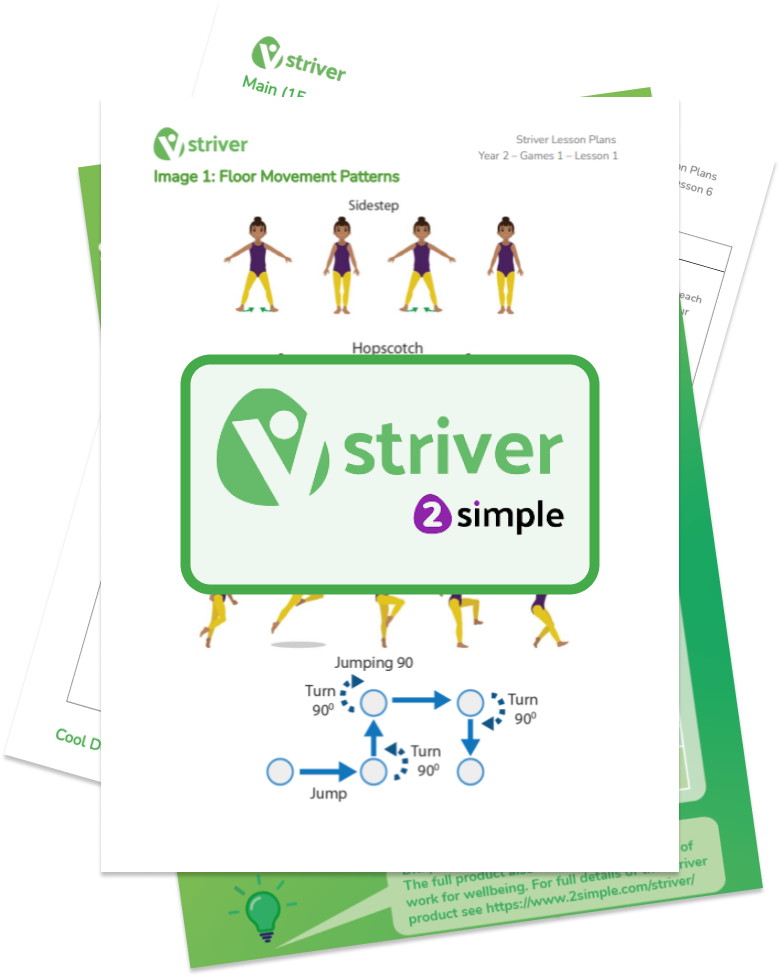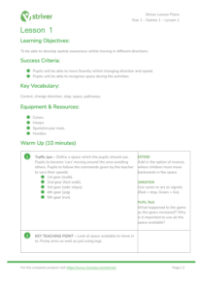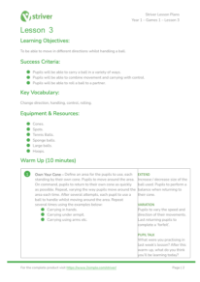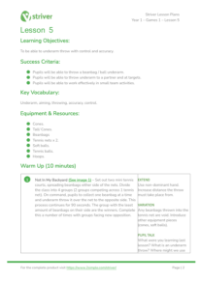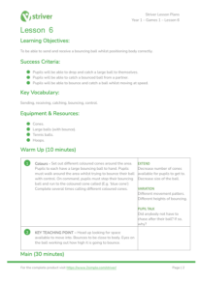Games 1 - Lesson 2
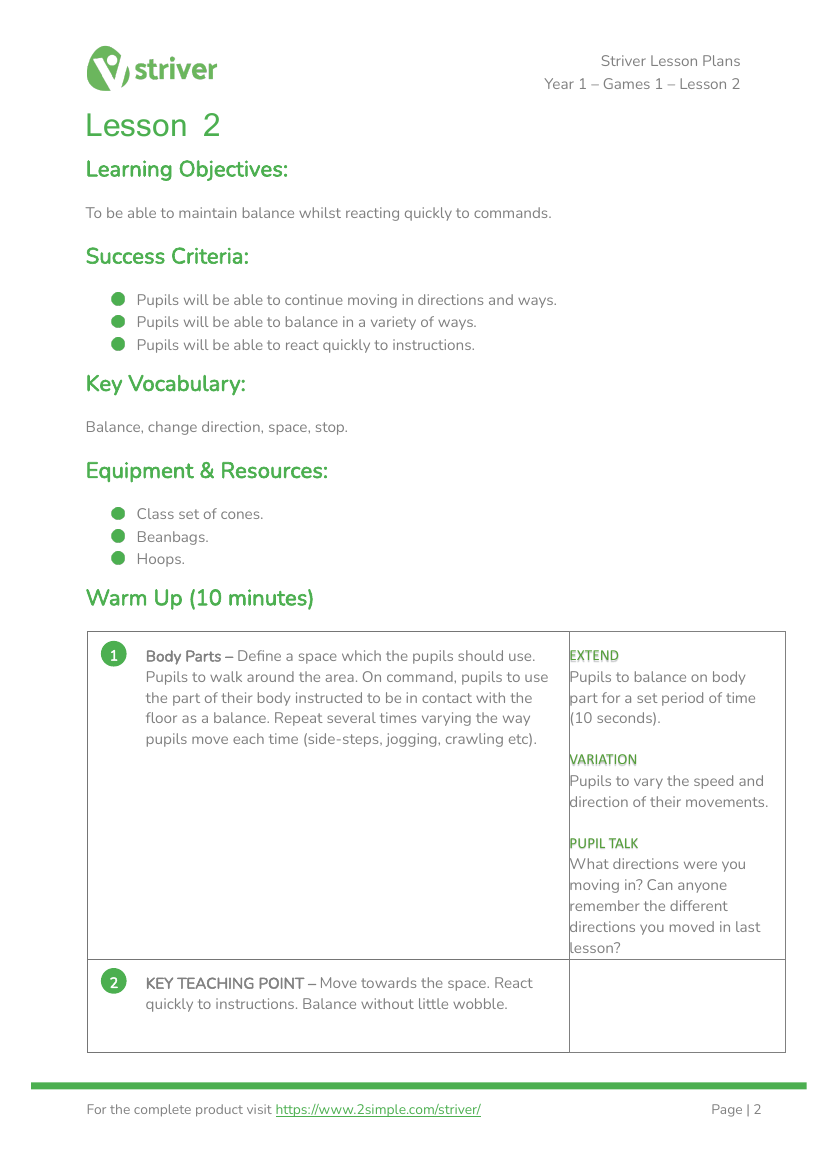
Physical Education Resource Description
In the second lesson of the Year 1 Games series, the objective is to develop pupils' ability to maintain balance while responding promptly to commands. The success of the lesson is gauged by the children's capacity to move continuously in various directions, balance in diverse ways, and react swiftly to instructions. Key terms for the lesson include 'balance', 'change direction', 'space', and 'stop'. To facilitate the activities, a class set of cones, beanbags, and hoops are required. The warm-up session involves a 'Body Parts' game, where pupils move around a defined space and balance using different body parts when prompted. This activity is designed to be dynamic, with variations in speed, direction, and the duration of the balance. The main part of the lesson consists of 'Static Balances', where pupils practice balancing in different positions, and a partner activity called 'Number 1 & 2', where they run to and from cones, incorporating balance elements. The lesson concludes with a 'Sharks' cool-down game, where pupils must quickly find and balance within hoops to avoid 'sharks'.
Each activity within the lesson is structured to progressively build the children's balancing skills and responsiveness. The 'Static Balances' activity requires pupils to perform various balances such as standing on one hand and two feet, or sitting with no hands and feet touching the ground. To challenge the pupils further, they are asked to balance a beanbag or cone on their head. The 'Number 1 & 2' activity encourages teamwork and quick reactions, as pupils run in response to commands and practice stopping with balance. The cool-down game 'Sharks' not only serves as a fun way to end the lesson but also reinforces the lesson's objectives by requiring quick thinking and balance under pressure. Throughout the lesson, pupils are engaged in discussions about their movements and strategies for better balance, ensuring that they reflect on their learning and understand the key points of maintaining balance and changing direction efficiently.

